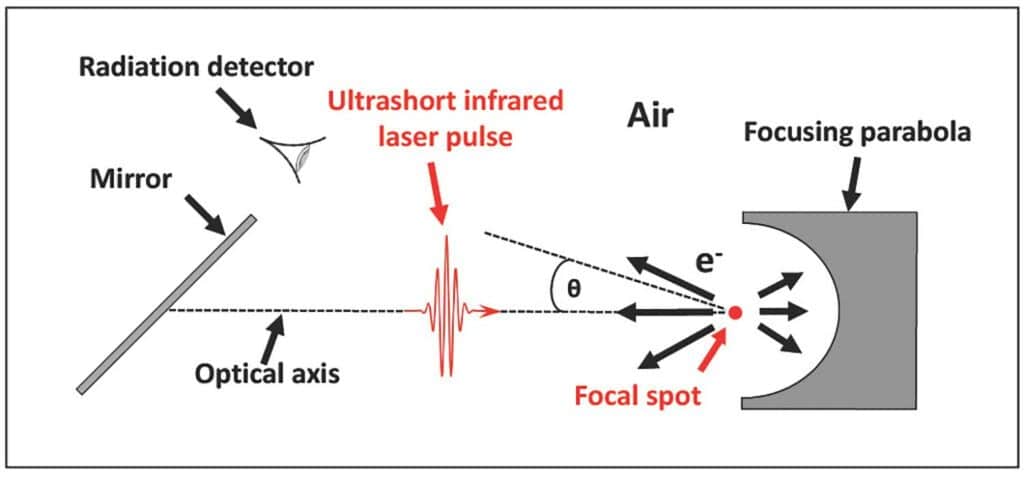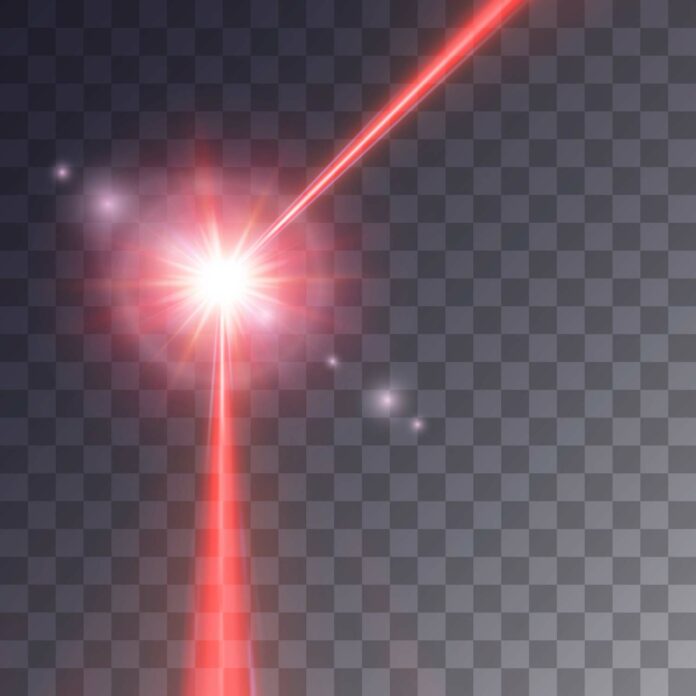Super short bursts of electrons, lasting only femtoseconds to picoseconds, open up exciting possibilities for studying things really fast. This includes exploring how structures change quickly and doing high-dose radiation studies.
Researchers have found a simple way to make these fast electron beams using a robust and short laser on air. Their experiments showed that the electrons reached high energy levels (1.4 MeV) rapidly (0.15 Gy/s), which could help treat radiation-related diseases.
The research team at the Advanced Laser Light Source Laboratory (ALLS) of the Institut national de Recherche Scientifique (INRS) demonstrated that electrons accelerated in ambient air can reach energies in the MeV (megaelectronvolts) range, i.e., around 1000 times greater than this previously insurmountable limit.
This discovery has important implications. First, extra care is needed when dealing with tightly focused laser beams in the air. The electrons produced can travel long distances, posing a risk of radiation exposure to people using the laser.

The energy levels observed in the electrons allow them to travel through the air for more than three meters or penetrate several millimeters under the skin. This creates a potential danger for those handling the laser source, as explained by Simon Vallières.
Additionally, the team found that the radiation dose rate of these electrons, when measured near the source, is three to four times higher than what’s typically used in regular radiation therapy.
Simon Vallières emphasizes that discovering this radiation hazard is a chance to establish safer laboratory practices. It’s crucial to handle tightly focused laser beams with care, avoiding exposure to high doses of radiation because they can harm your health.
François Légaré, Director of the EMT Centre, INRS, said, “For the first time, we showed that, under certain conditions, a laser beam tightly focused in ambient air can accelerate electrons reaching energies in the MeV (megaelectronvolts) range, the same order of magnitude as some irradiators used in radiation therapy for cancer.”
The achievement by the team at INRS’s EMT Centre marks a significant step forward in medical physics. An exciting application is in FLASH radiotherapy, a novel method for treating tumors that don’t respond well to regular radiation therapy. This technique allows the delivery of high doses of radiation in an incredibly short time, measured in microseconds instead of minutes. The advantage is that it minimizes damage to healthy tissue surrounding the tumor.
Although not fully grasped in research yet, the FLASH effect appears to relate to a swift reduction in oxygen levels in healthy tissues. This reduction makes these tissues less sensitive to radiation. This breakthrough holds promise for advancing cancer treatment by providing a more targeted and less harmful approach.
Journal Reference:
- Simon Vallières, Jeffrey Powell, Tanner Connell, Michael Evans, Marianna Lytova, High Dose-Rate MeV Electron Beam from a Tightly-Focused Femtosecond IR Laser in Ambient Air. Laser & Photonics Review. DOI: 10.1002/lpor.202300078
